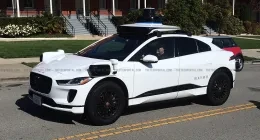The Nintendo Switch has finally been revealed after a long wait ever since its first preview. And first things first, it is amazing!
The Switch
So before any other details, everyone wants to know just how hard will the Switch hit our wallets. Well then here’s the good news, Nintendo’s latest console will run you just $300 (approx Rs. 22k) locally. International market prices, specifically those for India (assuming it does actually show up in the country) have not been revealed.
If you hadn’t already known, the Nintendo Switch is part tablet, part console and even part portable tabletop game system. But most importantly, it looks like the most innovative piece of hardware to come from Nintendo in years. And even more impressively, it’ll actually be usable as both a home console and a portable handheld device with just upto 2.5 to 6 hours of battery life (and that isn’t really a surprise given the system specs).
Nintendo officially confirmed the tech specs for the console. The Switch will be using a 6.2-inch 1280×720 resolution multi-touch capacitive screen. The console will also be using exactly just 32GB of internal storage, which you’ll be able to expand with a personal microSDXC card. The game cartridges are actually called “game cards” and you will drop them in from the top of the Switch.

The Joy-Con Controllers
When you buy the Switch, you’ll be receiving two of the “Joy-Con” controllers along with the system in the basic package. And as you saw in the preview, these controllers were the ones docked on either side of the portable version of the Switch.
Each of these controllers will be consisting of four buttons and a joystick, which, evidently, acts as a separate button. To be able to play the Switch in its docked and more powerful TV mode, you will be required to attach the two Joy-Cons to the Joy-Con Grip, which will give you the feeling of a more traditional controller, making it easier on the hands. They also keep in mind, each Joy-Con can actually be used as a separate controller for playing multiplayer split screen features with friends. And can also, like you’ve seen, attach to the Switch’s screen to turn the console into a handheld.
Take a closer look at the features of each Joy-Con controller. #NintendoSwitch pic.twitter.com/JuHBvoWRXI
— Nintendo of America (@NintendoAmerica) January 13, 2017
Like I mentioned earlier, every Switch console package will get you the left and right Joy-Cons, two wrist straps (so your reckless arse doesn’t throw these when you lose at Mario Kart) and finally one Joy-Con Grip controller.
Somehow losing one of the Joy-Cons will end up costing you $50 to replace. Or a more sufficient solution would be to get a pack of two, which’ll cost you $80 (Cause let’s face it, that won’t be the first time you’re going to lose or break that thing. keep an extra). The Grip pad, which along with giving a more traditional controller vibe, also charges the two Joy-Cons, will be retailing for just $30.
And just in case you want the experience of an even better controller, Nintendo’s got you covered with a more traditional gamepad, the Switch Pro Controller, which run you about $70.
Here’s a quick list of what all these Joy-Cons will be providing you with:
- NFC sensors that read and write amiibo data
- Accelerometer and gyrosensors for motion control in each Joy-Con
- Screen capture button for social-media sharing, video capture coming soon
- Different color variations, including neon blue and neon red
- Haptic feedback
- Motion IR camera in the right Joy-Con, which senses the shape, motion and distance of objects in front of it.
The Tech Portal is published by Blue Box Media Private Limited. Our investors have no influence over our reporting. Read our full Ownership and Funding Disclosure →







